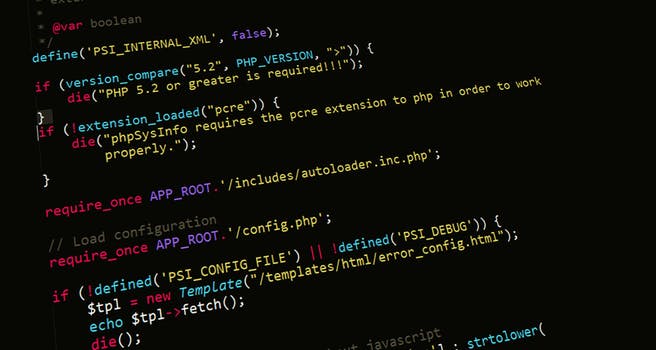TheDeveloperBlog.com
C-Sharp | Java | Python | Swift | GO | WPF | Ruby | Scala | F# | JavaScript | SQL | PHP | Angular | HTML
Java switch Examples
Use switch, and the case, default and break statements, to run code based on a variable.Default: The switch has no case for 0, so the default block is reached. We print out a message to the console with System.out.
ConsoleCase 1: For 1 the first case matches. A break exits the switch statement at the end of case 1, and then the loop continues.
Case 2, 3: For 2, the second case block is matched. This would match 3 as well. No break occurs, so it then matches default.
Java program that uses switch
public class Program {
public static void main(String[] args) {
// Loop through 0, 1, and 2.
for (int i = 0; i <= 2; i++) {
// Switch on number.
switch (i) {
case 1: {
System.out.println("One: " + i);
break;
}
case 2:
case 3: {
System.out.println("Two or three: " + i);
}
default: {
System.out.println("Default case: " + i);
}
}
}
}
}
Output
Default case: 0
One: 1
Two or three: 2
Default case: 2
Java program that uses method, Strings
public class Program {
static int getValue(String name) {
// Switch on a String argument.
switch (name) {
case "Max":
return 1;
case "Elle":
return 2;
}
return 0;
}
public static void main(String[] args) {
// Call method that uses switch.
String name = "Max";
int result = getValue(name);
System.out.println(result);
System.out.println(getValue("Elle"));
}
}
Output
1
2
Tip: We can check for possible string matches this way. A switch can check all possible characters at each position.
Java program that uses nested switch
public class Program {
public static void main(String[] args) {
String value = "hi";
// Switch on first letter.
switch (value.charAt(0)) {
case 'h':
// Switch on second letter.
switch (value.charAt(1)) {
case 'i':
System.out.println("Values are h, i");
break;
case 'e':
System.out.println("?");
break;
}
break;
case 'e':
System.out.println("?");
break;
}
}
}
Output
Values are h, i
Note: The compiler evaluates the constant expressions (like 10 * 10) at compile-time. They are the same as constant values (like 100).
Java program that uses expressions in switch
public class Program {
public static void main(String[] args) {
int value = 100;
// Match constant-value expressions in cases.
switch (value) {
case 10 * 1:
System.out.println("A");
break;
case 10 * 10:
System.out.println("B");
break;
case 10 * 100:
System.out.println("C");
break;
}
}
}
Output
B
Note: Constant expressions are checked for duplication as well. This helps ensure program quality.
Java program that has duplicate cases
public class Program {
public static void main(String[] args) {
int value = 100;
// This switch causes compilation problems.
switch (value) {
case 100:
System.out.println(true);
break;
case 100:
System.out.println(true);
break;
}
}
}
Output
Exception in thread "main" java.lang.Error:
Unresolved compilation problems:
Duplicate case
Duplicate case
at program.Program.main(Program.java:9)
Java program that causes type mismatch
public class Program {
public static void main(String[] args) {
byte value = 100;
// A byte can never equal 1000 so an error occurs.
switch (value) {
case 1000:
System.out.println(false);
return;
}
}
}
Output
Exception in thread "main" java.lang.Error:
Unresolved compilation problem:
Type mismatch: cannot convert from int to byte
at program.Program.main(Program.java:8)
Loop: A continue in a switch moves to the next iteration in an enclosing loop. A return acts on the enclosing method.
Java program that uses continue in switch
public class Program {
public static void main(String[] args) {
for (int i = 0; i < 5; i++) {
switch (i) {
case 0:
case 1:
// The continue moves to the next iteration in the loop.
continue;
default:
// This breaks the switch, not the loop.
break;
}
System.out.println(i);
}
}
}
Output
2
3
4
Version 1: This version of the code uses a switch-statement to test for the values 0 through 4.
Version 2: Here we use an if-else chain to test for the values 0 through 4. We can use more complex expressions here.
Result: The switch statement is faster. But switch can slow down a method—try checking for the most common case in an if-statement.
Java program that times switch, if-statement
public class Program {
public static void main(String[] args) {
long t1 = System.currentTimeMillis();
// Version 1: use switch.
int total = 0;
for (int i = 0; i < 100000000; i++) {
switch (i) {
case 0:
total--;
break;
case 1:
total -= 2;
break;
case 2:
case 3:
case 4:
total++;
break;
}
}
long t2 = System.currentTimeMillis();
// Version 2: use if-else.
int total2 = 0;
for (int i = 0; i < 100000000; i++) {
if (i == 0) {
total2--;
} else if (i == 1) {
total2 -= 2;
} else if (i >= 2 && i <= 4) {
total2++;
}
}
long t3 = System.currentTimeMillis();
// ... Times.
System.out.println(t2 - t1);
System.out.println(t3 - t2);
}
}
Output
234 ms, switch
281 ms, if/else if
Caution: With switch, problems can occur because of incorrect fall-through cases. Be careful to check that are used when needed.
Also: An alternative control structure is the if-statement. This may be clearer in many program contexts.
IfSo: Frequency analysis can help with determining whether an if-statement or a switch is optimal.
Tip: Add to a counter on each code statement reached. And then optimize for the most common path.
Related Links:
- Java Continue Keyword
- Java Convert Char Array to String
- Java Combine Arrays
- Java Console Examples
- Java Web Services Tutorial
- Java Odd and Even Numbers: Modulo Division
- Java IO
- Java 9 Features
- Java 8 Features
- Java String
- Java Regex | Regular Expression
- Java Filename With Date Example (Format String)
- Java Applet Tutorial
- Java Files.Copy: Copy File
- Java filter Example: findFirst, IntStream
- Java Final and final static Constants
- Java Super: Parent Class
- Java Date and Time
- Java do while loop
- Java Break
- Java Continue
- Java Comments
- Java Splitter Examples: split, splitToList
- Java Math.sqrt Method: java.lang.Math.sqrt
- Java Reflection
- Java Convert String to int
- JDBC Tutorial | What is Java Database Connectivity(JDBC)
- Java main() method
- Java HashMap Examples
- Java HashSet Examples
- Java Arrays.binarySearch
- Java Integer.bitCount and toBinaryString
- Java Overload Method Example
- Java First Words in String
- Java Convert ArrayList to String
- Java Convert boolean to int (Ternary Method)
- Java regionMatches Example and Performance
- Java ArrayDeque Examples
- Java ArrayList add and addAll (Insert Elements)
- Java ArrayList Clear
- Java ArrayList int, Integer Example
- Java ArrayList Examples
- Java Boolean Examples
- Java break Statement
- Java Newline Examples: System.lineSeparator
- Java Stream: Arrays.stream and ArrayList stream
- Java charAt Examples (String For Loop)
- Java Programs | Java Programming Examples
- Java OOPs Concepts
- Java Naming Conventions
- Java Constructor
- Java Class Example
- Java indexOf Examples
- Java Collections.addAll: Add Array to ArrayList
- Java Compound Interest
- Java Int Array
- Java Interface Examples
- Java 2D Array Examples
- Java Remove HTML Tags
- Java Stack Examples: java.util.Stack
- Java Enum Examples
- Java EnumMap Examples
- Java StackOverflowError
- Java startsWith and endsWith Methods
- Java Initialize ArrayList
- Java Object Array Examples: For, Cast and getClass
- Java Objects, Objects.requireNonNull Example
- Java Optional Examples
- Java Static Initializer
- Java static Keyword
- Java Package: Import Keyword Example
- Java Do While Loop Examples
- Java Double Numbers: Double.BYTES and Double.SIZE
- Java Truncate Number: Cast Double to Int
- Java Padding: Pad Left and Right of Strings
- Java Anagram Example: HashMap and ArrayList
- Java Math.abs: Absolute Value
- Java Extends: Class Inheritance
- Java String Class
- Java String Switch Example: Switch Versus HashMap
- Java StringBuffer: append, Performance
- Java Array Examples
- Java Remove Duplicates From ArrayList
- Java if, else if, else Statements
- Java Math.ceil Method
- Java This Keyword
- Java PriorityQueue Example (add, peek and poll)
- Java Process.start EXE: ProcessBuilder Examples
- Java Palindrome Method
- Java parseInt: Convert String to Int
- Java toCharArray: Convert String to Array
- Java Caesar Cipher
- Java Array Length: Get Size of Array
- Java String Array Examples
- Java String compareTo, compareToIgnoreCase
- Java String Concat: Append and Combine Strings
- Java Cast and Convert Types
- Java Math.floor Method, floorDiv and floorMod
- Java Math Class: java.lang.Math
- Java While Loop Examples
- Java Reverse String
- Java Download Web Pages: URL and openStream
- Java Math.pow Method
- Java Math.round Method
- Java Right String Part
- Java MongoDB Example
- Java Substring Examples, subSequence
- Java Prime Number Method
- Java Sum Methods: IntStream and reduce
- Java switch Examples
- Java Convert HashMap to ArrayList
- Java Remove Duplicate Chars
- Java Constructor: Overloaded, Default, This Constructors
- Java String isEmpty Method (Null, Empty Strings)
- Java Regex Examples (Pattern.matches)
- Java ROT13 Method
- Java Random Number Examples
- Java Recursion Example: Count Change
- Java reflect: getDeclaredMethod, invoke
- Java Count Letter Frequencies
- Java ImmutableList Examples
- Java String equals, equalsIgnoreCase and contentEquals
- Java valueOf and copyValueOf String Examples
- Java Vector Examples
- Java Word Count Methods: Split and For Loop
- Java Tutorial | Learn Java Programming
- Java toLowerCase, toUpperCase Examples
- Java Ternary Operator
- Java Tree: HashMap and Strings Example
- Java TreeMap Examples
- Java while loop
- Java Convert String to Byte Array
- Java Join Strings: String.join Method
- Java Modulo Operator Examples
- Java Integer.MAX VALUE, MIN and SIZE
- Java Lambda Expressions
- Java lastIndexOf Examples
- Java Multiple Return Values
- Java String.format Examples: Numbers and Strings
- Java Joiner Examples: join
- Java Keywords
- Java Replace Strings: replaceFirst and replaceAll
- Java return Examples
- Java Multithreading Interview Questions (2021)
- Java Collections Interview Questions (2021)
- Java Shuffle Arrays (Fisher Yates)
- Top 30 Java Design Patterns Interview Questions (2021)
- Java ListMultimap Examples
- Java String Occurrence Method: While Loop Method
- Java StringBuilder capacity
- Java Math.max and Math.min
- Java Factory Design Pattern
- Java StringBuilder Examples
- Java Mail Tutorial
- Java Swing Tutorial
- Java AWT Tutorial
- Java Fibonacci Sequence Examples
- Java StringTokenizer Example
- Java Method Examples: Instance and Static
- Java String Between, Before, After
- Java BitSet Examples
- Java System.gc, Runtime.getRuntime and freeMemory
- Java Character Examples
- Java Char Lookup Table
- Java BufferedWriter Examples: Write Strings to Text File
- Java Abstract Class
- Java Hashtable
- Java Math class with Methods
- Java Whitespace Methods
- Java Data Types
- Java Trim String Examples (Trim Start, End)
- Java Exceptions: try, catch and finally
- Java vs C#
- Java Float Numbers
- Java Truncate String
- Java Variables
- Java For Loop Examples
- Java Uppercase First Letter
- Java Inner Class
- Java Networking
- Java Keywords
- Java If else
- Java Switch
- Loops in Java | Java For Loop
- Java File: BufferedReader and FileReader
- Java Random Lowercase Letter
- Java Calendar Examples: Date and DateFormat
- Java Case Keyword
- Java Char Array
- Java ASCII Table
- Java IntStream.Range Example (Get Range of Numbers)
- Java length Example: Get Character Count
- Java Line Count for File
- Java Sort Examples: Arrays.sort, Comparable
- Java LinkedHashMap Example
- Java Split Examples